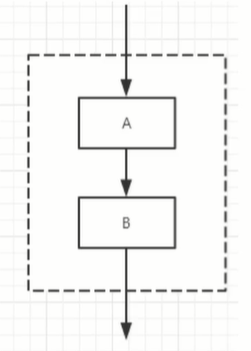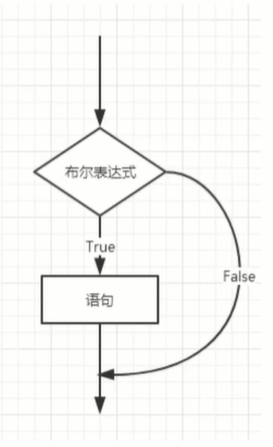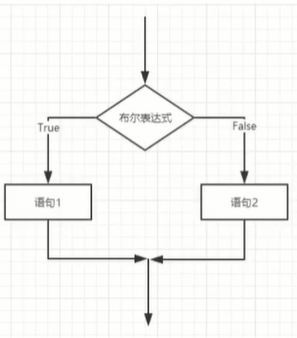之前我们学的基本语法中我们并没有实现程序和人的交互,但是Java给我们提供了这样的工具类,我们可以获取用户的输入。java.util.Scanner 是 Java5 的新特性,我们可以同过Scanner类来获取用户的输入
基本语法:
Scanner s = new Scanner(System.in);
通过 Scanner 类的 next() 与 nextLine() 方法获取输入的字符串,在读取前我们一般需要使用 hasNext() 与 hasNextLine() 判断是否还有输入的数据
package com.kuang.Scanner;
import java.util.Scanner;
public class Demo01 {
public static void main(String[] args) {
//创建一个扫描器对象,用于接收键盘数据
Scanner scanner = new Scanner(System.in);
System.out.println("使用next方式接收:");
//判断用户有没有输入字符串
if (scanner.hasNext()) {
//使用next方式接收
String str = scanner.next(); //程序会等待用户输入完毕
System.out.println("输出的内容为:" + str);
}
//凡是属于IO流的类如果不关掉会一直占用资源,要养成好习惯用完就关掉
scanner.close();
}
}
next():
nextLine():
package com.kuang.Scanner;
import java.util.Scanner;
public class Demo02 {
public static void main(String[] args) {
//从键盘接收数据
Scanner scanner = new Scanner(System.in);
System.out.println("使用nextLine方式接收:");
//判断是否还有输入
if (scanner.hasNext()) {
String str = scanner.nextLine();
System.out.println("输出的内容为:" + str);
}
scanner.close();
}
}
package com.kuang.Scanner;
import java.util.Scanner;
public class Demo03 {
public static void main(String[] args) {
Scanner scanner = new Scanner(System.in);
System.out.println("请输入数据:");
String str = scanner.nextLine();
System.out.println("输出的内容为:" + str);
scanner.close();
}
}
Scanner进阶使用
package com.kuang.Scanner;
import java.util.Scanner;
public class Demo05 {
public static void main(String[] args) {
//我们可以输入多个数字,并求其总和与平均数,每输入一个数字用回车确认,通过输入非数字来结束输入并输出执行结果
Scanner scanner = new Scanner(System.in);
//和
double sum = 0;
//计算输入了多少个数字
int m = 0;
//通过循环判断是否还有输入,并在里面对每一次进行求和和统计
while (scanner.hasNextDouble()) {
double x = scanner.nextDouble();
m = m + 1; //m++
sum = sum + x;
System.out.println("你输入了第" + m + "个数据,然后当前结果sum=" + sum);
}
System.out.println(m + "个数的和为" + sum);
System.out.println(m + "个数的平均值是" + (sum / m));
scanner.close();
}
}

语句与语句之间,框与框之间是按从上到下的顺序进行的,它是由若干个依次执行的处理步骤组成的,它是任何一个算法都离不开的一种基本算法结构
package com.kuang.struct;
public class ShunXuDemo {
public static void main(String[] args) {
System.out.println("hello1");
System.out.println("hello2");
System.out.println("hello3");
System.out.println("hello4");
System.out.println("hello5");
}
}
if单选择结构

if (布尔表达式) {
//如果布尔表达式为true将执行的语句
}
package com.kuang.struct;
import java.util.Scanner;
public class IfDemo01 {
public static void main(String[] args) {
Scanner scanner = new Scanner(System.in);
System.out.println("请输入内容:");
String s = scanner.nextLine();
//equals:判断字符串是否相等
if (s.equals("Hello")) {
System.out.println(s);
}
System.out.println("End");
scanner.close();
}
}
if双选择结构

if (布尔表达式的) {
//如果布尔表达式的值为true
}else {
//如果布尔表达式的值为false
}
package com.kuang.struct;
import java.util.Scanner;
public class IfDemo02 {
public static void main(String[] args) {
//考试分数大于60就是及格,小于60分就不及格
Scanner scanner = new Scanner(System.in);
System.out.println("请输入成绩:");
int score = scanner.nextInt();
if (score >= 60) {
System.out.println("及格");
}else {
System.out.println("不及格");
}
scanner.close();
}
}
if多选择结构

if (布尔表达式 1) {
//如果布尔表达式 1的值为true执行代码
}else if (布尔表达式 2) {
//如果布尔表达式 2的值为true执行代码
}else if (布尔表达式 3) {
//如果布尔表达式 3的值为true执行代码
}else {
//如果以上布尔表达式的值都不为true执行代码
}
package com.kuang.struct;
import java.util.Scanner;
public class IfDemo03 {
public static void main(String[] args) {
//考试分数大于60就是及格,小于60分就不及格
Scanner scanner = new Scanner(System.in);
/*
if 语句至少有 1 个 else 语句,else 语句在所有的 else if语句之后
if 语句可以有若干个 else if 语句,它们必须在 else 语句之前
一旦其中一个 else if 语句检测为 true,其他的 else if 以及 else 语句都将跳过执行
*/
System.out.println("请输入成绩:");
int score = scanner.nextInt();
if (score == 100){
System.out.println("恭喜满分");
}else if (score < 100 && score >= 90) {
System.out.println("A级");
}else if (score < 90 && score >= 80) {
System.out.println("B级");
}else if (score < 80 && score >= 70) {
System.out.println("C级");
}else if (score < 70 && score >= 60) {
System.out.println("D级");
}else if (score < 60 && score >= 0) {
System.out.println("不及格");
}else {
System.out.println("成绩不合法");
}
scanner.close();
}
}
嵌套的if结构
使用嵌套的 if...else 语句是合法的。也就是说你可以在另一个 if 或者 else if 语句中使用 if 或者 else if 语句。你可以像 if 语句一样嵌套 else if...else
语法:
if (布尔表达式 1) {
//如果布尔表达式 1的值为true执行代码
if (布尔表达式 2) {
//如果布尔表达式 2的值为true执行代码
}
}
switch多选择结构
多选择结构还有一个实现方式就是 switch case 语句
switch case 语句判断一个变量与一系列值中某个值是否相等,每个值称为一个分支
语法:
switch (expression) {
case value:
//语句
break; //可选
case value:
//语句
break; //可选
//你可以有任意数量的case语句
default: //可选
//语句
}
switch 语句中的变量类型可以是:
package com.kuang.struct;
public class SwitchDemo01 {
public static void main(String[] args) {
//case穿透 switch 匹配一个具体的值
char grade = ‘C‘;
switch (grade) {
case ‘A‘:
System.out.println("优秀");
break; //可选
case ‘B‘:
System.out.println("良好");
break; //可选
case ‘C‘:
System.out.println("及格");
break; //可选
case ‘D‘:
System.out.println("再接再厉");
break; //可选
case ‘E‘:
System.out.println("挂科");
default:
System.out.println("未知等级");
}
}
}
package com.kuang.struct;
public class SwitchDemo02 {
public static void main(String[] args) {
String name = "布里茨";
//JDK7的新特性,表达式结果可以是字符串!!!
//字符的本质还是数字
//反编译 java---class(字节码文件)----反编译(IDEA)
switch (name) {
case "布里茨":
System.out.println("布里茨");
break;
case "安妮":
System.out.println("安妮");
break;
default:
System.out.println("未知");
}
}
}
while 循环
while 是最基本的循环,它的结构为:
while (布尔表达式) {
//循环内容
}
只要布尔表达式为true,循环就会一直执行下去
我们大多数情况是会让循环停止下来,我们需要一个让表达式失效的方式来结束循环
少部分情况需要一直循环,比如服务器的请求响应监听等
循环条件一直为true就会造成无限循环【死循环】,我们正常的业务编程中应该尽量避免死循环。会影响程序性能或者造成程序卡死崩溃
package com.kuang.struct;
public class WhileDemo01 {
public static void main(String[] args) {
//输出1~100
int i = 0;
while (i < 100) {
i++;
System.out.println(i);
}
}
}
package com.kuang.struct;
public class WhileDemo02 {
public static void main(String[] args) {
//死循环
while (true) {
//等待客户端连接
//定时检查
//...
}
}
}
package com.kuang.struct;
public class WhileDemo03 {
public static void main(String[] args) {
//计算1+2+3+...+100=?
//高斯的故事
int i = 0;
int sum = 0;
while (i <= 100) {
sum = sum + i;
i++;
}
System.out.println(sum);
}
}
do...while 循环
对于 while 语句而言,如果不满足条件,则不能进入循环。但有时候我们需要即使不满足条件,也至少执行一次
do...while 循环和 while 循环相似,不同的是,do...while 循环至少会执行一次
do {
//代码语句
}while (布尔表达式);
while 和 do-while 的区别:
package com.kuang.struct;
public class DoWhileDemo01 {
public static void main(String[] args) {
int i = 0;
int sum = 0;
do {
sum = sum + i;
i++;
}while (i <= 100);
System.out.println(sum);
}
}
package com.kuang.struct;
public class DoWhileDemo02 {
public static void main(String[] args) {
int a = 0;
while (a < 0) {
System.out.println(a);
a++;
}
System.out.println("===============");
do {
System.out.println(a);
a++;
}while (a < 0);
}
}
for 循环
虽然所有循环结构都可以用 while 或者 do...while 表示,但Java提供了另一种语句 —— for循环,使一些循环结构变得更加简单
for 循环语句使支持迭代的一种通用结构,是最有效、最灵活的循环结构
for 循环执行的次数是在执行前就确定的。语法格式如下:
for (初始化; 布尔表达式; 更新) {
//代码语句
}
package com.kuang.struct;
public class ForDemo01 {
public static void main(String[] args) {
int a = 1; //初始化条件
while (a <= 100) {//条件判断
System.out.println(a); //循环体
a += 2; //迭代
}
System.out.println("while循环结束!");
//初始化//条件判断//迭代
for (int i = 1; i <= 100; i++) {
System.out.println(i);
}
System.out.println("for循环结束!");
/*
关于 for 循环有一下几点说明:
最先执行初始化步骤。可以声明一种类型,但可初始化一个或多个循环控制变量,也可以是空语句
然后,检测布尔表达式的值。如果为 true,循环体被执行。如果为 false,循环终止,开始执行循环体后面的语句
执行一次循环后,更新循环控制变量(迭代因子控制循环变量的增减)
再次检测布尔表达式。循环执行上面的过程
*/
}
}
package com.kuang.struct;
public class ForDemo02 {
public static void main(String[] args) {
//练习1:计算0到100之间的奇数和偶数的和
int oddSum = 0;
int evenSum = 0;
for (int i = 0; i <= 100; i++){
if (i % 2 != 0) { //奇数
oddSum += i;
}else { //偶数
evenSum += i;
}
}
System.out.println("奇数的和:" + oddSum);
System.out.println("偶数的和:" + evenSum);
}
}
package com.kuang.struct;
public class ForDemo03 {
public static void main(String[] args) {
//练习2:用 while 或 for 循环输出1-1000之间能被5整除的数,并且每行输出三个
for (int i = 0; i <= 1000; i++) {
if (i % 5 == 0) {
System.out.print(i + "\t");
}
if (i % (5*3) ==0) {
System.out.println();
//System.out.print("\n");
}
}
//println 输出完会换行
//print 输出完不会换行
}
}
package com.kuang.struct;
public class ForDemo04 {
public static void main(String[] args) {
//打印乘法口诀表
//1.我们先打印第一列
//2.我们把固定的1再用一个循环包起来
//3.去掉重复项,i <= j
//4.调整样式
for (int i = 1; i <= 9; i++) {
for (int j = 1; j <= i; j++) {
System.out.print(j + "*" + i + "=" + i * j + "\t");
}
System.out.println();
}
}
}
在Java5中引入了一种主要用于数组的增强型for循环
在这里我们先只是见一面,做个了解,之后数组我们重点使用
Java5 引入了一种主要用于数组或集合的增强型 for 循环
Java 增强 for 循环语法格式如下:
for (声明语句 : 表达式)
{
//代码句子
}
声明语句:声明新的局部变量,该变量的类型必须和数组元素的类型匹配。其作用域限定再循环语句块,其值与此时数组元素的值相等
表达式:表达式是要访问的数组名,或者是返回为数组的方法
package com.kuang.struct;
public class ForDemo05 {
public static void main(String[] args) {
int[] numbers = {10, 20, 30, 40, 50}; //定义了一个数组
for (int i = 0; i < 5; i++) {
System.out.println(numbers[i]);
}
//遍历数组的元素
for (int x : numbers) {
System.out.println(x);
}
}
}
break 在任何循环语句的主体部分,均可用 break 控制循环的流程。break 用于强行退出循环,不执行循环中剩余的语句(break 语句也在 switch 语句中使用)
continue 语句用在循环语句体中,用于终止某次循环过程,即跳过循环体中尚未执行的语句,接着进行下一次是否执行循环的判定
关于 goto 关键字
package com.kuang.struct;
public class BreakDemo {
public static void main(String[] args) {
int i = 0;
while (i < 100) {
i++;
System.out.println(i);
if (i == 30) {
break;
}
}
}
}
package com.kuang.struct;
public class ContinueDemo {
public static void main(String[] args) {
int i = 0;
while (i < 100) {
i++;
if (i % 10 == 0) {
System.out.println();
continue;
}
System.out.println(i);
}
}
}
package com.kuang.struct;
public class LabelDemo {
public static void main(String[] args) {
//打印101-150之间所有的质数
int count = 0;
//不建议使用!!!
outer:for (int i = 101; i < 150; i++) {
for (int j = 2; j < i / 2; j++) {
if (i % j == 0) {
continue outer;
}
}
System.out.print(i + " ");
}
}
}
package com.kuang.struct;
public class TestDemo {
public static void main(String[] args) {
//打印三角形 5行
for (int i = 1; i <= 5; i++) {
for (int j = 5; j >= i; j--) {
System.out.print(" ");
}
for (int j = 1; j <= i; j++) {
System.out.print("*");
}
for (int j = 1; j < i; j++) {
System.out.print("*");
}
System.out.println();
}
}
}
原文:https://www.cnblogs.com/AIKangK/p/14398918.html